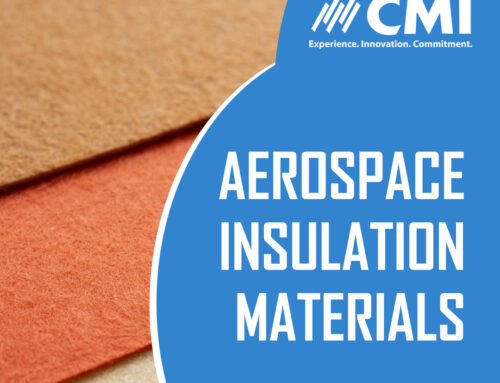The exploration of new materials in the vast field of materials science has uncovered one of the most promising and innovative substances known to date: silica aerogel.
Noted for its exceptional traits, silica aerogel is a marvel that redefines the future of porous materials for insulation. As the most common type of aerogel, its extraordinary capabilities have caught the attention and imagination of scientists and engineers globally. Applications of aerogels are vast, stretching from the freezing vacuum of outer space to the comfortable confines of residential homes.
This deep dive into silica aerogel will unwrap the complexities and marvels of a substance that seamlessly marries the attributes of extreme lightness with outstanding insulation properties. This lightest solid material has rightfully earned its place in the annals of scientific achievement, continuously pushing the boundaries of energy conservation and sustainable building practices.
Origin and Development
The history of silica aerogel is as layered as the material itself. Invented by Samuel Stephens Kistler in the 1930s, aerogels were initially a curiosity within the scientific community. However, they soon ascended to prominence as essential components for thermal insulation in NASA’s Skylab space station.
The technological leap from experimental novelty to widespread use took a significant leap forward during wartime when the United States Navy began commercializing aerogel production, broadening its reach into several modern applications, including the pioneering first residential use of aerogels.

Understanding Silica Aerogel
Known as “frozen smoke” because of its ghostly appearance, silica aerogel is a powerhouse in thermal resistance and energy conservation/a>. This unique material, characterized by its immense surface area, extremely low bulk density, and high porosity, is revolutionizing numerous industries.
Its range of applications is impressively broad, from enhancing the capabilities of delicate instruments like NMR spectroscopy to reinventing the role of silica gel in polyurethane foam and energy-efficient windows.
With its footing in both the commercial and residential sectors firmly established, as showcased by the Georgia Institute of Technology’s explorative studies, silica aerogel’s versatility and adaptability are being acknowledged and utilized increasingly.
The Science Behind Silica Aerogel
Crafted through the careful manipulation of gel precursors, usually starting at ambient room temperature conditions, silica aerogels transition from a wet gel state to their famed porous solid form.
The supercritical drying process is performed under ambient pressure, a method that carefully removes liquid from the gel without collapsing the framework to ensure the preservation of the aerogel’s intricate high porosity structure.
The result of this process is a material with ultra-low thermal conductivity, which benefits from the Knudsen effect for its superior insulating capabilities.
Structure and Porosity
The microstructure of silica aerogel, a network of silica particles, showcases the fascinating potential of porous materials. This highly porous network results in an extensive surface area within the aerogel’s framework, with pore sizes so small that they significantly impact the behavior of gases and liquids that interact with the material.
The Knudsen Effect
The minute particle size within silica aerogels gives rise to the Knudsen effect, which has a profound impact on the material’s performance. This phenomenon significantly influences how gases are adsorbed and how heat is transferred within the microstructure. It also affects sound insulation properties, further diversifying the variety of applications for this unique porous material.

Unique Features
Silica aerogels are distinguished by their unique features that set them apart in materials science. These features have sparked a multitude of advancements, cementing their status as the most common type of aerogel and positioning them as a staple in the industry and research.
Unmatched Insulation Properties
Silica aerogels offer the lowest thermal conductivity among solid materials, making them superior insulators. The structure of these remarkable porous materials is key to their insulating ability, as the high porosity traps air and minimizes heat transfer.
Silica aerogel’s insulation properties are not limited to temperature alone; they also provide remarkable sound dampening due to their structure, which disrupts sound waves.
Light Transmission and Solar Radiation Absorption
Notably, silica aerogels can transmit light while absorbing solar radiation. This makes them particularly useful in applications such as skylights and windows where maximizing natural light is desired without the accompanying heat gain. The absorption properties help manage the solar heat gains in structures, which contributes to a building’s overall energy efficiency.
High Specific Surface Area
The high specific surface area of silica aerogels gives them substantial surface energy unmatched by more conventional solid materials. This feature is critical for applications where surface reactions are important, such as in catalysis or sensor technology. It also contributes to the material’s ability to collect dust particles from the air, which has implications for air filtration and purification applications.
Lightweight and Flexible Nature
The composition of silica aerogels allows them to be incredibly lightweight, often described as being as light as air. This lightweight nature, combined with their flexible characteristics, makes them ideal for applications where weight is a critical factor, such as aerospace and high-performance apparel.
The unique features of silica aerogel, including their unmatched insulation properties, light transmission, and high specific surface area, demonstrate the remarkable properties of this versatile material. Coupled with their lightweight and flexible nature, silica aerogels have cemented their place as a crucial material in advancing insulation technology and beyond.
Silica Aerogel as an Insulator
The exceptional insulating properties of silica aerogel have led to their adoption in various applications, such as energy-efficient windows, skylights, and building insulation. Their ability to improve thermal and sound insulation, combined with their light-guiding capabilities, marks a significant advancement toward sustainable and eco-friendly architectural designs.
Energy-Efficient Windows and Skylights
Silica aerogel’s role in glazing systems for windows and skylights has revolutionized the construction industry. Using its low thermal conductivity and high optical transmission, buildings can now maintain interior temperatures more effectively while maximizing the natural daylight.
Integrating silica aerogels into building designs shows a commitment to enhanced energy efficiency, reduction in artificial lighting dependency, and a move toward a smaller environmental footprint.
Insulation in Buildings
Whether in new construction or retrofitting, adding silica aerogel into building insulation constitutes significant advancements in energy conservation. It reduces energy use and utility expenses while enhancing the acoustic environment for a more comfortable indoor experience.
Aerogel-Based Coatings for Aero-Propulsion Systems
Silica aerogel-based coatings on aero-propulsion systems are another testament to their versatility, delivering exceptional thermal insulation and effectively managing heat under extreme conditions. The unique insulating qualities of silica aerogels aid in safeguarding propulsion systems across a broad range of environmental challenges.
Production and Safety of Silica Aerogel
The production process for silica aerogels is complex, centered on the pivotal step of supercritical drying, which is crucial to achieving the lightest solid material with unparalleled insulating properties. Handling silica aerogels during production requires strict safety precautions, including protocols to minimize exposure to hazardous dust particles and other risks.

Potential Applications of Silica Aerogel
The widespread use of aerogels, with silica aerogels and carbon aerogels at the forefront, is transforming many industries, thanks to their unparalleled properties. These advancements in materials science are unlocking new possibilities for applications that span from everyday living spaces to the most demanding environments.
Revolutionizing Building Insulation
Silica aerogels, renowned for their high porosity and minimal thermal conductivity, are reshaping building insulation.
The semitransparent roof of the Georgia Institute of Technology’s Solar Decathlon House is a landmark example of the first residential use of aerogels, combining light transmission with exceptional thermal insulation—features that make aerogels an invaluable material.
Advancing Aerospace and Maritime Frontiers
NASA’s adoption of silica aerogel insulation for space exploration—due to its ability to capture dust particles and insulate against the severe temperature of space—demonstrates its potential in extraterrestrial applications. NASA relies on them for thermal insulation in space suits and Mars rovers, capitalizing on their low density and excellent insulating properties.
For maritime endeavors, the United States Navy has employed aerogel technology for diver’s undergarments, harnessing their thermal resistance in deep-sea environments.
Enhancing Functional Clothing and Textiles
Integrating aerogel into high-performance apparel has resulted in clothing that offers exceptional thermal protection yet remains flexible and breathable. These properties have spurred the development of innovative apparel designed for extreme climates and sporting activities.
Innovations in Industrial Processes
Silica and carbon aerogels are employed in industrial settings, such as thermal insulation for pipelines, to optimize energy consumption and maintain process consistency. Their lightweight and robust insulating properties are also beneficial in the transportation and automotive sectors, contributing to energy savings and performance improvements.
Ecological Applications and Clean-up Operations
Due to their high surface area, aerogels are effective in environmental clean-up efforts, capable of absorbing pollutants while repelling water. This makes silica and carbon aerogels valuable allies in combating ecological disasters like oil spills.
How Silica Aerogel Can Influence Future Insulation Technologies
Silica aerogels play a significant role in the evolution of insulation across various industries. Their remarkable insulating properties, driven by their high surface area and minimal thermal conductivity, are at the heart of advancements in thermal energy efficiency.
As the cornerstone of new advancements in energy-efficient technologies, silica aerogel is an essential component in the future of insulation.
A Brighter, Greener Tomorrow With Silica Aerogel
Silica aerogel stands as a beacon of innovation in the quest for sustainability and efficient energy use. With its diverse applications, benefits, and ongoing research and development, it is poised to continue shaping the future of insulation technology.
By offering a balance of superior insulation performance and environmental responsibility, silica aerogel is set to heavily influence how we conserve energy and design our living spaces for future generations.

Frequently Asked Questions
What is silica aerogel, and how does it work as an insulator?
Silica aerogel is a very lightweight and porous substance that insulates by trapping air in its tiny network of holes, which slows down heat passing through it due to its large surface area and low weight.
What are the benefits of using silica aerogel as an insulator?
Silica aerogel offers numerous benefits, including ultra-low thermal conductivity, resistance to fire, mold, and moisture, and significant potential for long-term energy savings. These benefits have prompted broader exploration into the applications of aerogels.
How does silica aerogel insulation compare to traditional insulation materials?
Silica aerogel outperforms traditional insulation materials due to its higher R-value per inch. It offers more effective thermal resistance in a thinner, lighter form, often at ambient room temperature, without additional barriers.
Are there any downsides or risks to using silica aerogel as an insulator?
While the production and installation of silica aerogel are generally safe, it requires care to prevent inhalation or ingestion of fine dust particles. Despite its higher initial cost compared to conventional insulation, its long-term efficiency and performance benefits can outweigh the upfront investment.
What are some applications where silica aerogel insulation is particularly useful?
The versatility of silica aerogel has led to its use in various applications, including space exploration, sustainable construction, refrigeration, and high-performance apparel, showcasing its wide adaptability and efficiency.







